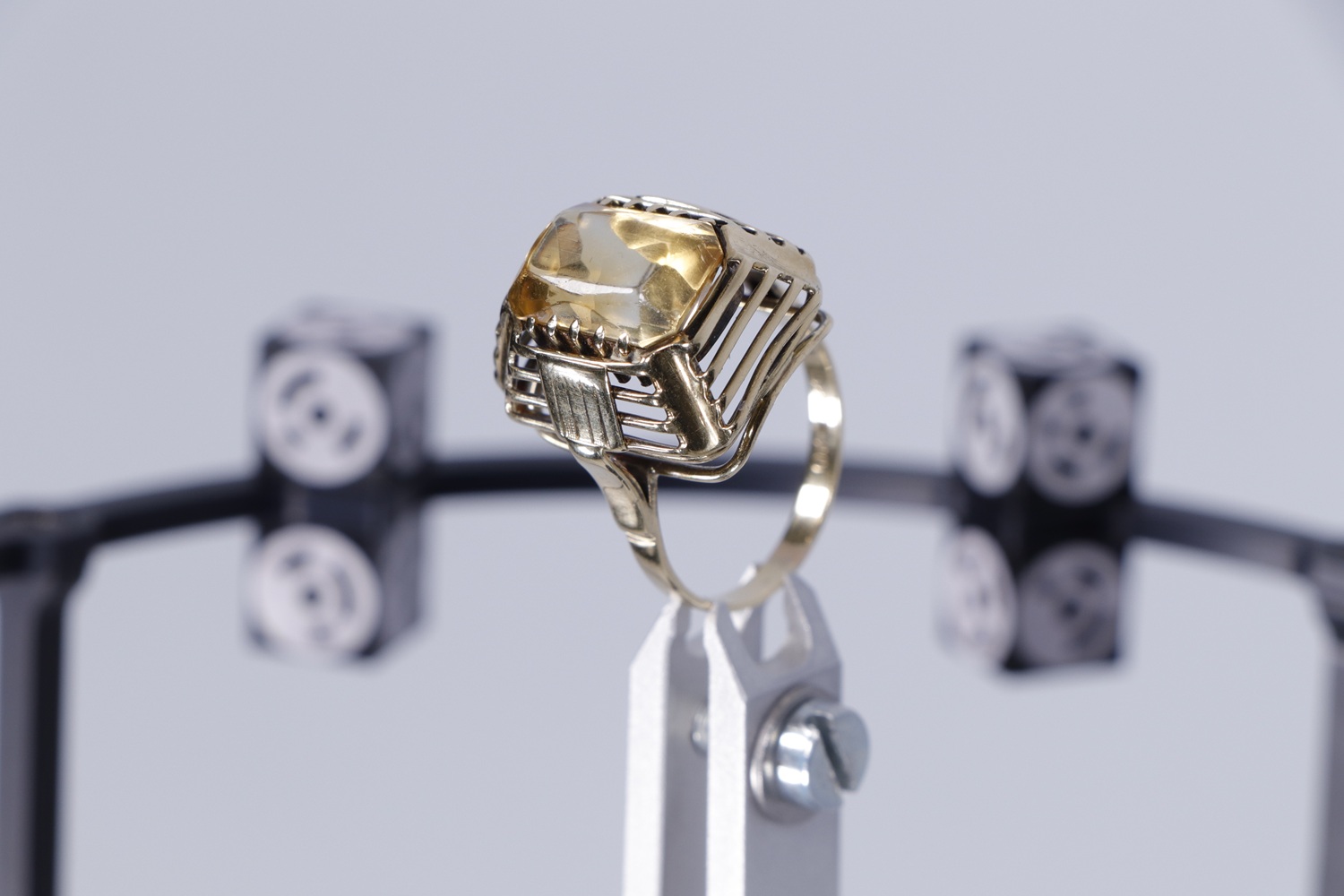
Digital brilliance from the year 1961
Zwönitz, 3 November 2025 - As part of a pilot project, CLAUSS® has digitized an extraordinary gold ring from 1961 in extremely high detail resolution. The piece of jewelry was made in Dessau and stands for an independent, often little-noticed development in jewelry design in post-war modernism.
Jewelry art in East Germany - modern, experimental, constructive
The early 1960s marked a phase of creative renewal in East Germany: many artists and goldsmiths were looking for contemporary formal languages that broke away from the ornamentation of the pre-war period. Instead of representative decoration, the focus shifted to material clarity, technical precision and sculptural structures.
The digitized ring is an authentic example of this approach:
- Emergence: early 1960s - a time of new departures in art and design
- Material: Gold setting with 20-carat citrine
- Design: open, almost architectural construction instead of a classic decorative frame
- Idea: the gemstone is not embedded, but visibly "worn" as an independent object
- Influences: Bauhaus after-effects, functional design, engineering aesthetics
The result is a piece of jewelry that is as much sculpture as ring - modern in its form, deliberate in its use of material, far removed from the traditional image of prestigious gemstone rings.

Digitization as a dazzling challenge
The image was captured using the automatic 3D scanning system CYBERGLOBE® from CLAUSS®.
The technical conditions were demanding:
- Highly reflective gold surfaces
- Deep light and inclusions in citrine
- Finest surface details that could not be "smoothed out"
Thanks to the system, the object could be captured without contact at a level of detail that is almost impossible to achieve even when viewed with a magnifying glass. The result is a freely explorable 3D model - rotatable, zoomable, documentarily precise.
🔗 3D model online:
https://superspl.at/view?id=a6e0fd14
The cover image shown here is taken directly from this data set and shows how constructively the ring is designed: the setting is reminiscent of a technical supporting structure that integrates the solid citrine like a transparent structural element.
With this pilot project, CLAUSS® shows how digital technologies can not only preserve art historical objects, but also make them come alive in a new way:
A ring of German postmodernism - preserved in gold, enhanced in 3D.
